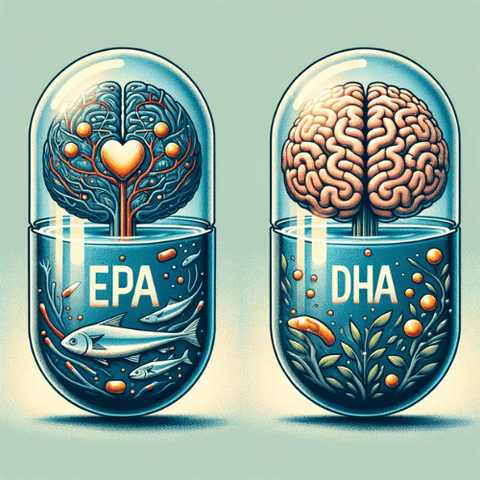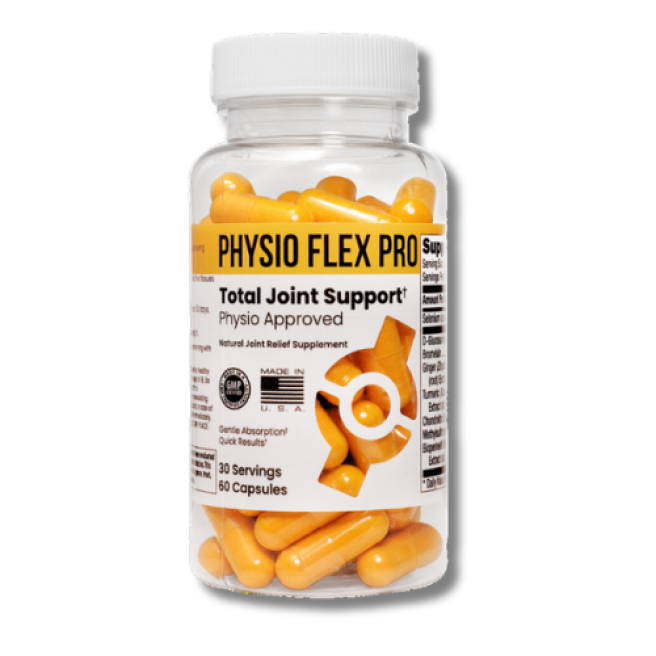Omega-3 fatty acids are essential fats that provide important health benefits to the body. Two fatty acids – EPA and DHA are essential nutrients that prevent and manage heart disease, promote brain function, and reduce inflammation. But how do they differ from each other? Could one be better for your health?
This article will compare EPA vs DHA, their sources, benefits, and what happens when taken together.
Overview of Omega-3 Fatty Acids

Not all fats are bad, and omega-3 fatty acids prove that. Omega-3 fatty acids (also called omega-3 fats and n-3 fats) are essential fats that help all the cells in your body function optimally. They also provide calories for energy and facilitate various bodily functions, particularly the cardiovascular and endocrine systems.
Body’s Diverse Needs
Omega-3 fatty acids have many important bodily functions, most especially energy storage. The body can use fatty acids to fuel the cells in the absence of glucose. Their biological activities influence cell and tissue metabolism, function, and responsiveness to hormonal and other signals.
Studies show that EPA and DHA influence many functions, like proper fetal development, promoting and maintaining cognitive function, promoting healthy eyesight, and strengthening the immune system, among many others.
Omega-3 fatty acids are generally known to provide the following health benefits:
- Reduce blood pressure
- Lower triglyceride levels
- Reduce cancer risk
- Prevent fatty livers
- Prevents plaque buildup in the arteries
- Improve eyesight
- Promote bone and joint health
- Promotes optimal cardiovascular health
- Improve sleep quality
- Protects the skin against sun damage
- Promote brain growth and development in infants
- Fight depression and anxiety
- Prevent cognitive decline among elders
Types of Omega-3 Fatty Acids
There are three types of omega-3 fatty acids. Each is sourced differently and is used by the body in many ways:
What is EPA (Eicosapentaenoic Acid)?
Eicosapentaenoic acid (EPA) is an omega-3 polyunsaturated fatty acid found in marine life like herring, salmon, cod, sardines, and krill. It can also be found in algae and human breast milk. Structurally, EPA is a carboxylic acid with a 20-carbon backbone chain and five double cis bonds, with the first double bond found at the third carbon from the omega end.
Studies show that EPA has important antihyperlipidemic, antihyperglycemic, and antioxidant properties that benefit cardiovascular health. One clinical trial showed that EPA supplementation is a possible preventive measure in reducing the risk of cardiovascular problems and strokes among smokers.
According to various studies, omega-3 fatty acids reduce inflammation, particularly in the joints, and improve some people's symptoms of rheumatoid arthritis, such as morning stiffness, tender/swollen joints, and joint pains. Further research also shows that the natural anti-inflammatory properties of omega-3 found in fish oils can relieve menstrual pain.
EPA can also help maintain optimal mental health; its anti-inflammatory properties modulate inflammatory processes and directly affect neuronal membrane fluidity and receptor function.
What is DHA (Docosahexaenoic Acid)?
Like EPA, docosahexaenoic acid is another omega-3 fatty acid mainly found in seafood like mackerel, sardine, herring, salmon, and caviar. It can also be found in algae, cod, meat, dairy, and pasteurized eggs. And like EPA, DHA is also a carboxylic acid, with a slightly longer composition of a 22-carbon chain and six double cis bonds at the omega end.
Scientists prize DHA for its role in facilitating the growth and functional development of the brain in infants and maintaining and enhancing cognitive functions in adults. Further studies show that a deficiency in DHA may impair or curb a person’s learning abilities.
DHA is also important for healthy eyesight. Numerous studies show a link between low retinal DHA and conditions like retinitis pigmentosa and age-related macular degeneration. Supplementing with DHA can benefit eye health since it can help reduce inflammation and reverse the effects of oxidative damage on the eyes.
Alpha-linolenic Acid
Unlike EPA and DHA, which are mostly found in animal foods like fatty fish, alpha-linolenic acid (APA) is an essential fatty acid found in significant amounts in plants, seeds, seed oils, and nuts like flax seed (and flaxseed oil), walnuts, soybean oil, and rapeseed oil.
While the body can convert ALA into EPA and DHA, it doesn’t yield too much effect in humans. Only about 1–10% of ALA is converted into EPA, while 0.5–5% into DHA.
EPA vs DHA: A Comparative Analysis
While fatty acids are beneficial, EPA and DHA each have unique properties that address different aspects of health that are not interchangeable.:
- Chain length – The main (but minor) difference between EPA and DHA is their fatty acid chain length. DHA has 22 carbons and 6 double bonds, while EPA contains 20 and 5.
- Sources – EPA and DHA are mainly sourced from seafood and fish oil. However, small amounts of DHA can be sourced from dairy, eggs, and certain types of meat.
- Unique benefits – While they share many properties, EPA is best known for its protective antioxidant and anti-inflammatory properties, while DHA is more known for its cognitive health benefits.
Synergistic Effects of EPA & DHA – Why You Need Both
Complementary Roles in Health
Various studies have shown that taking EPA and DHA together produces a synergistic effect wherein the presence of both complements and enhances the benefits of the other to support overall health.
For example, studies show that the combination of EPA and DHA can combat chronic inflammation and reduce the risk of inflammatory diseases, with EPA producing signaling molecules called eicosanoids, while DHA can regulate hormones that deactivate inflammatory responses.
DHA and EPA’s cardioprotective properties have improved cardiovascular health and reduced the risk of heart disease, heart attacks, strokes, and blood clotting. One study showed that taking 2-4 grams of EPA+DHA daily can help lower triglyceride levels by up to 40%, while another study found that a dosage of 1.86 g of EPA and 1.5 g of DHA daily prevented the progression of atherosclerotic plaque.
Taking DHA and EPA has been shown to have potential anti-cancer properties. One study showed that women with higher intakes of EPA and DHA (dietary) had about a 25% reduced risk of additional breast cancer. Another study showed these fatty acids can protect against colorectal cancer when combined with chemotherapeutic agents and other natural anti-cancer compounds. However, further study is still needed to further solidify EPA and DHA’s anti-cancer benefits.
The combination of EPA and DHA has also been beneficial for maintaining and sharpening the brain’s cognitive function, memory, and motor speed, as well as improving mood and behaviors.
Ratios & Outcomes
Varying ratios of EPA and DHA can cause and benefit different health outcomes; that is, one fatty acid having a higher ratio can yield different benefits depending on what the consumer wants to increase.
Most essential omega-3 supplements have a 1:1 ratio of DHA to EPA. However, the Functional Neurological Center recommends that if a person would like to get a stronger cognitive function, their supplement should have at least a ratio of 4:1 of DHA to EPA. On the other hand, if a person wants stronger cardiovascular health or enhanced anti-inflammatory effects, they should go for a supplement with a higher EPA ratio.
Practical Applications and Recommendations
Dietary Sources

Since they’re essential fats, the body can’t make omega-3 fatty acids on its own but must get them from food sources, such as:
- Seafood (E.g., salmon, mackerel, tuna, herring, sardines, crab, and shrimp)
- Leafy vegetables (E.g., seaweed and algae, brussels sprouts, spinach, broccoli, etc.)
- Nuts (Walnuts)
- Seeds (E.g., flax pumpkin, sunflower, chia, etc.)
- Certain oils (E.g., flaxseed oil, olive oils
- Grass-fed meats (E.g., beef, buffalo, and lamb)
- Poultry (E.g., chicken and turkey)
While fish oil is an excellent source of omega-3 fatty acids, those who follow a vegan/vegetarian diet would naturally want to seek it from non-animal sources. Nuts, oil, and vegetables would then be part of their diet.
Algae oil is a great source of omega-3; others even consider it a greater and more sustainable source than fish oil since fish get their omega-3s from eating algae. Algal oil is more bioavailable and sustainable than fish oil since it is more environmentally friendly and ethical.
Dosage and Ratio
Most experts usually prescribe a recommended daily amount (RDA) of 3000 – 4000 mg of EPA+DHA daily to provide sufficient support for most healthy adults. You can also discuss dosage and ratio adjustments with your healthcare provider or trusted pharmacist.
The EPA+DHA ratio can vary depending on your health needs. People who would want stronger cognitive function or healthier eyesight should get a supplement with a higher ratio of DHA to EPA. However, if a person wants stronger cardiovascular health, enhanced anti-inflammatory effects, or relief from depression and mood problems, they should opt for one with a higher EPA ratio.
Guidance on Balanced Intake
While omega-3 supplements do help you get enough EPA+DHA for your health needs, most health experts still recommend that eating foods rich in omega-3 fatty acids and other nutrients provides more benefits than it does by taking supplements. They should always be taken together, coupled with lifestyle changes and observing better health habits.
If you’re new to EPA+DHA’s benefits and supplementation dos and don’ts, consult your healthcare professional to get recommendations tailored to your health needs and conditions.
FAQs (Frequently Asked Questions)
1. Can you take EPA and DHA together?
Taking EPA and DHA produces a synergistic effect where they complement and enhance their benefits. As such, studies show that their combination yields greater cardioprotective, anti-inflammatory, and anti-cancer benefits.
2. How much EPA and DHA should I take for specific health conditions?
A recommended daily amount (RDA) of 3000 – 4000 mg of EPA+DHA provides sufficient support for adults. While most supplements have a 1:1 ratio, the question of which fatty acid should be higher depends on the health needs or conditions the person is taking the supplements for – higher DHA promotes stronger cognitive or eye health, while a higher EPA yields better cardiovascular health, mental health relief, and greater anti-inflammatory effects.
3. Are there any side effects of taking EPA or DHA supplements?
While rare, some of the side effects linked to taking omega-3 supplements include stomach problems, loose stools, and nausea. Some supplements may also leave a fishy aftertaste and cause foul-smelling breath.
4. Can pregnant or breastfeeding women take EPA and DHA supplements?
Yes, both EPA and DHA are highly recommended for fetal and infant development. However, DHA is more beneficial for pregnancy and during the early developmental stages of an infant's life.
5. How does the body absorb and utilize EPA and DHA?
The body uses fatty acids like EPA and DHA for energy storage by fueling the cells in the absence of glucose. Their biological activities influence cell and tissue metabolism, function, and responsiveness to hormonal and other signals.
Conclusion
EPA and DHA are omega-3 fatty acids that maintain cell function and yield many important health benefits. Each fatty acid has distinct roles and actions in the body while also having overlapping benefits that are heightened, especially when both are taken synergistically.
Understanding the differences and applications of EPA and DHA helps you maximize their health benefits and achieve a more optimal state of health. Consult with your healthcare provider about EPA+DHA supplementation to see which ratio fits your health needs better.






